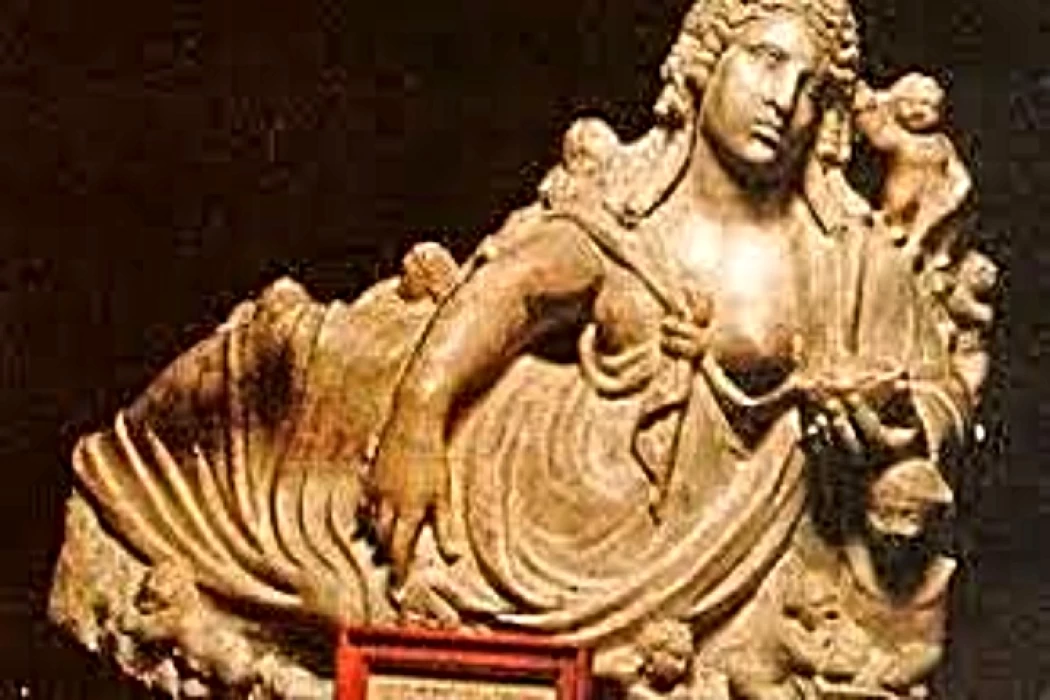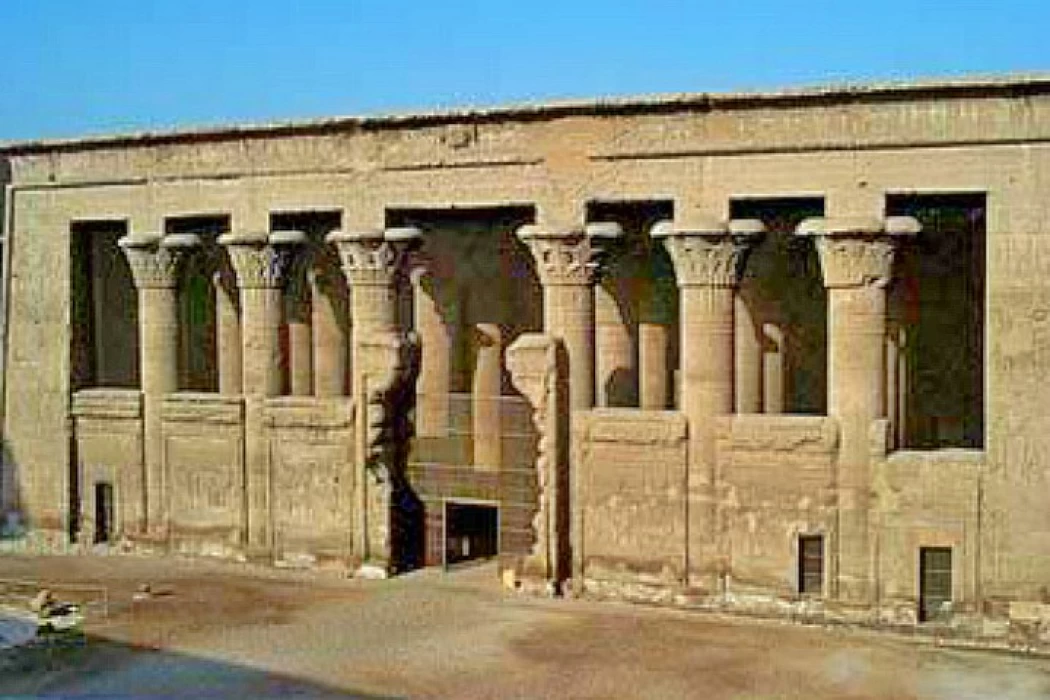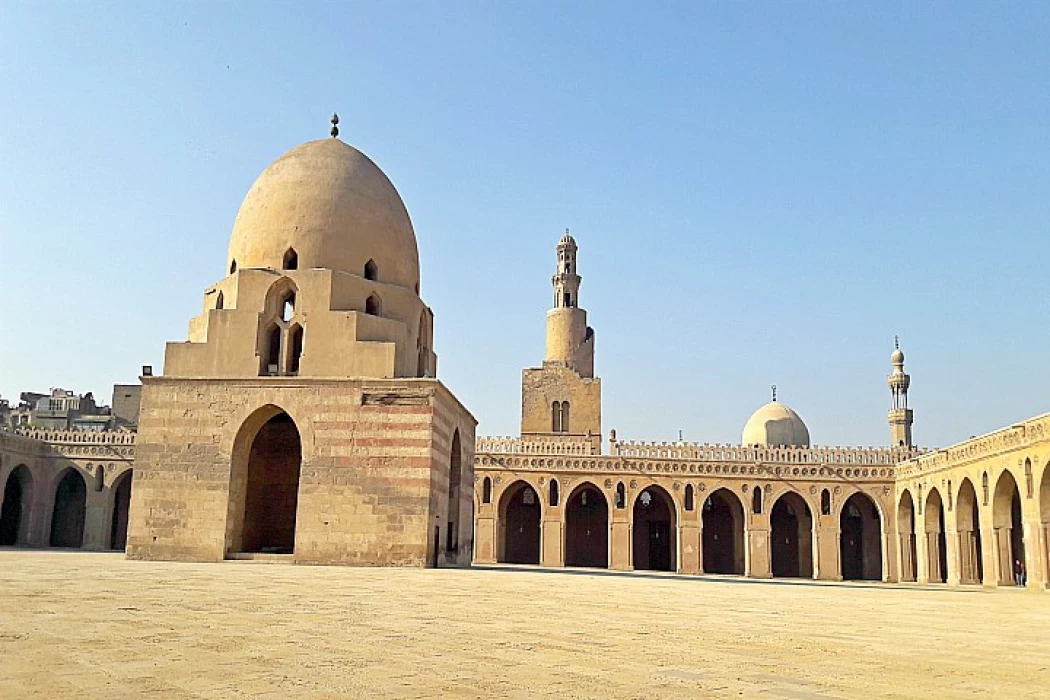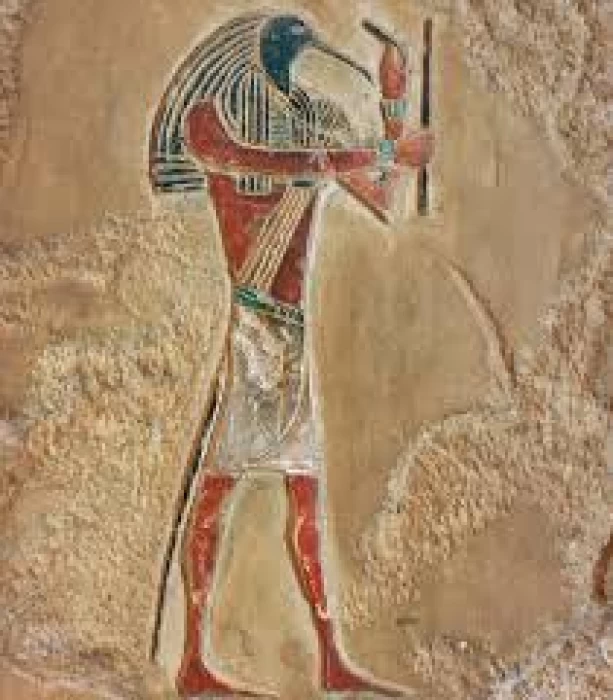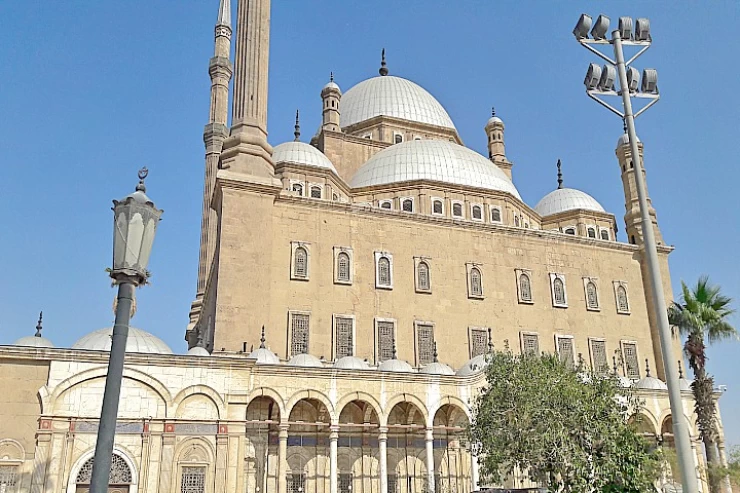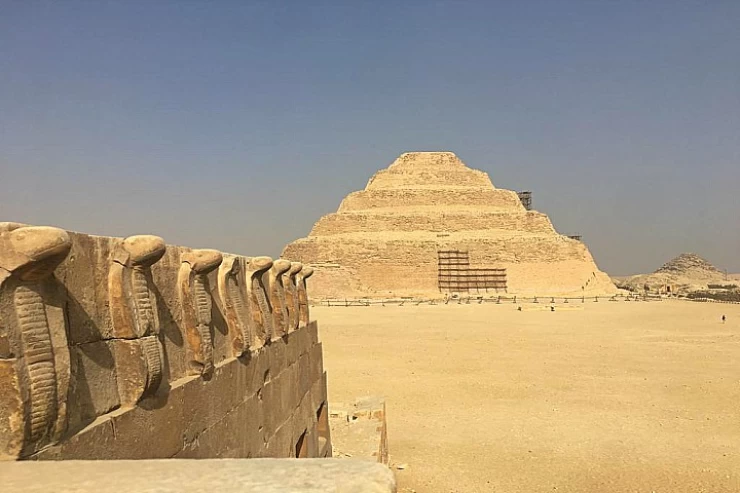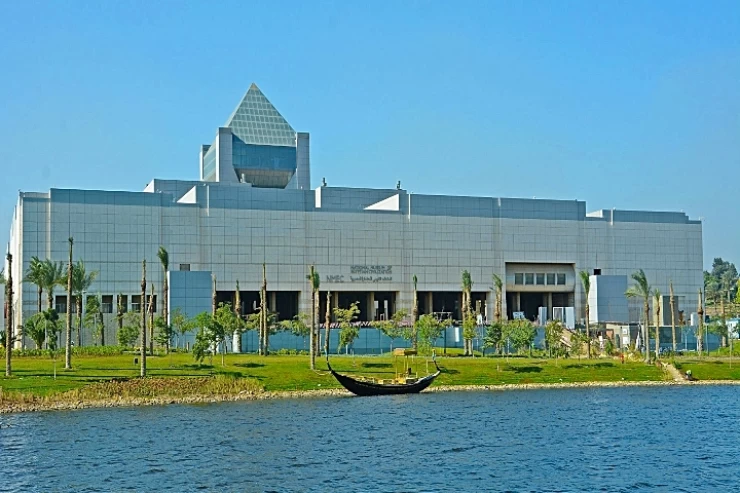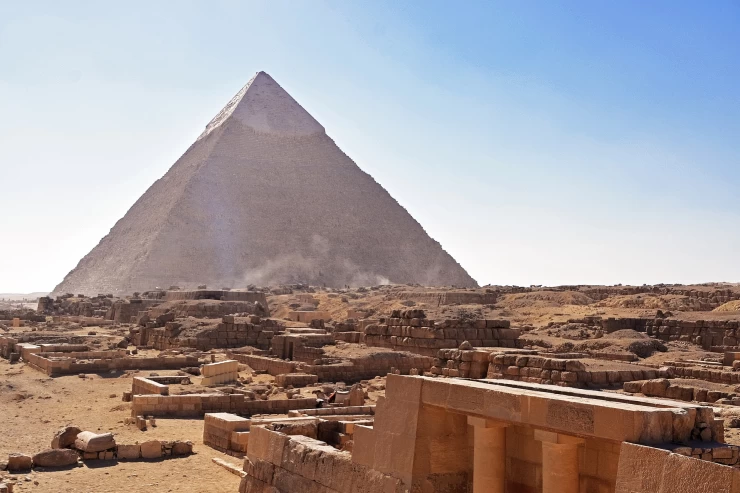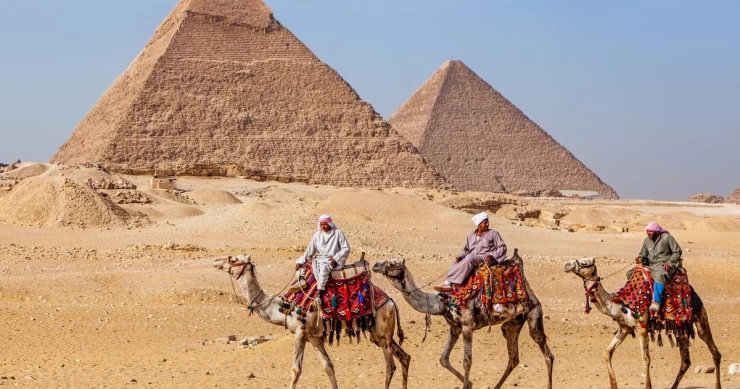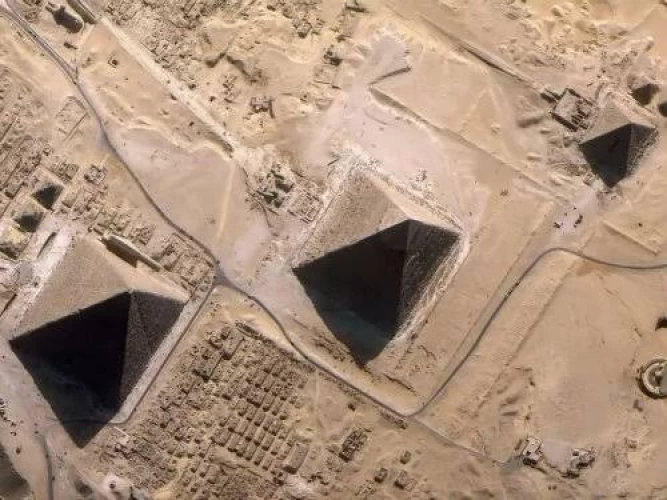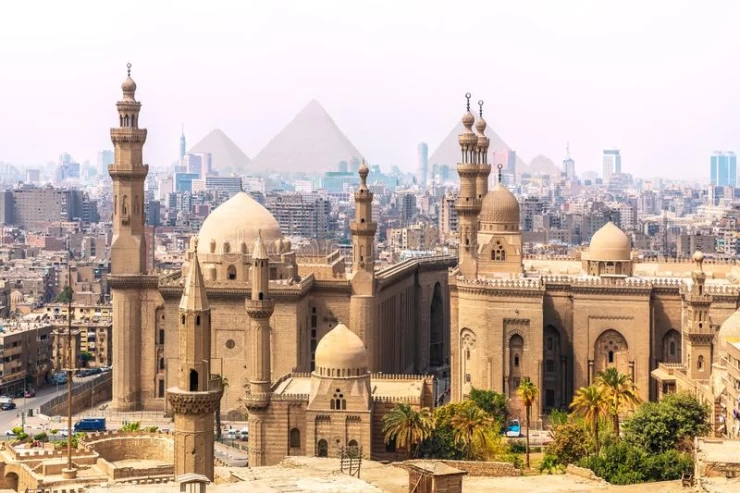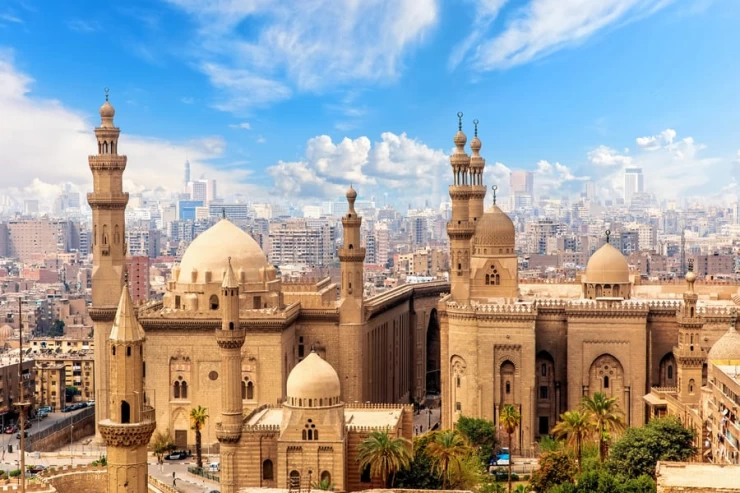
Sultan Hassan Complex
The Sultan Hassan Complex: A Masterpiece of Mamluk Architecture
Tucked into the historic heart of Cairo, Egypt, near the Citadel, the Sultan Hassan Mosque and Madrasa, commonly known as the Sultan Hassan Complex, stands as one of the greatest architectural achievements of the Islamic world. Built during the Mamluk era, this monumental structure not only served religious and educational purposes but also embodied the power, wealth, and artistic sophistication of the Mamluk Sultanate.
Commissioned by Sultan an-Nasir Hassan in the 14th century, the complex has earned international acclaim for its size, architectural innovation, and intricate decorative elements. Even today, it captivates historians, architects, tourists, and spiritual seekers alike. In this article, we will delve into the rich history, architectural features, cultural significance, and enduring legacy of the Sultan Hassan Complex.
Historical Background
The Mamluk Sultanate
The Mamluk Sultanate (1250–1517) was a powerful Islamic regime that ruled over Egypt and the Levant. Known for its military prowess and cultural patronage, the Mamluk era saw an explosion of architectural activity, particularly in Cairo, which became the political, cultural, and religious centre of the Islamic world.
The Mamluks were originally slave soldiers, primarily of Turkic and Circassian origin, who rose to power and established a military elite. Their sultans often commissioned grand mosques, madrasas (Islamic schools), khanqahs (Sufi lodges), and other public works to assert legitimacy and commemorate their reigns.
Sultan an-Nasir Hassan
Sultan Hassan ascended the throne twice during turbulent periods in the mid-14th century. His first reign (1347–1351) was marked by political instability and ended when he was deposed. He regained the throne in 1354 and ruled until his assassination in 1361.
Despite his relatively short and troubled rule, Sultan Hassan is remembered for commissioning one of the most ambitious and artistically significant Islamic architectural projects of the Middle Ages: the Sultan Hassan Mosque and Madrasa Complex.
Construction and Design
Timeline and Challenges
Construction began in 1356 and continued for seven years. The complex was not fully completed by the time of Sultan Hassan's assassination in 1361. It is said that a portion of the minaret collapsed during construction, killing several people, which was seen as a bad omen.
The complex was designed by a team of master architects, engineers, and craftsmen, many of whom were brought from across the Islamic world. The project was financed through the confiscated wealth of plague victims—a fact that contributes to the legend and mystique surrounding its origins.
Layout and Purpose
The Sultan Hassan Complex is a multifunctional Islamic institution. It was designed to include:
- A Congregational Mosque
- A Madrasa for Each of the Four Sunni Schools of Law (Hanafi, Maliki, Shafi’i, and Hanbali)
- A Mausoleum for Sultan Hassan
- A Sabil (public fountain)
- Housing for students and teachers
This multi-purpose design was characteristic of Mamluk architecture, aiming to serve both the living and the dead while asserting religious legitimacy.
Architectural Features
Monumental Scale
The complex is one of the largest Islamic structures in the world. The main facade stretches over 150 meters in length and rises to a height of 36 meters. The minaret, which is among the tallest in Cairo, reaches 68 meters. The massive size was meant to symbolize the authority and grandeur of the sultan.
The Entrance Portal
The monumental entrance portal is a masterpiece of stone carving and Muqarnas (stalactite-like ornamentation). It leads into a bent entrance corridor, a defensive feature used in Mamluk architecture to control access and provide an impressive procession into the space.
The Central Courtyard (Sahn)
At the heart of the complex is a large open-air courtyard, surrounded by four iwans (vaulted halls). Each iwan was dedicated to one of the four Sunni madhhabs. The iwans are decorated with intricate stucco work, marble inlays, and Quranic inscriptions. The use of symmetry and axial alignment creates a sense of harmony and spiritual focus.
The Mihrab and Minbar
The southern iwan contains the mihrab, a prayer niche indicating the direction of Mecca. This mihrab is elaborately adorned with marble panels, mosaic, and gilded inscriptions. Next to it is the minbar, a pulpit used for Friday sermons, made of finely carved wood and mother-of-pearl inlay.
The Mausoleum
Ironically, Sultan Hassan was never buried in the mausoleum he had built for himself. His body disappeared after his assassination, and its whereabouts remain a mystery. Nevertheless, the mausoleum chamber is one of the most architecturally significant parts of the complex. It features a soaring dome and rich decorative elements, intended to ensure the sultan’s remembrance through eternity.
Artistic and Cultural Significance
Decorative Arts
The Sultan Hassan Complex showcases the finest examples of Mamluk decorative arts. Techniques used include:
Stone Carving
Stucco Work
Wooden Screens and Ceilings (Mashrabiya and Muqarnas)
Geometric and Floral Motifs
Calligraphy in Thuluth and Kufic Scripts
These decorations were not merely ornamental but held symbolic and spiritual significance, reflecting the divine harmony and complexity of the universe.
Educational Role
The complex served as a major centre for Islamic education for centuries. It housed scholars and students from different legal schools, promoting intellectual exchange and religious cohesion. The design of separate iwans for each school allowed for simultaneous instruction.
Restoration and Preservation
Over the centuries, the Sultan Hassan Complex has suffered from neglect, natural disasters, and human conflict. Several restoration efforts have been undertaken, especially during the Ottoman and modern Egyptian periods. Today, it is maintained by Egypt’s Supreme Council of Antiquities and is open to the public as both a place of worship and a historical monument.
Contemporary Legacy
The Sultan Hassan Complex continues to inspire awe in those who visit. Its grand scale, rich history, and architectural brilliance make it a symbol of Islamic heritage. It has been featured in countless scholarly works and documentaries and continues to be a major tourist attraction in Cairo.
Moreover, it stands as a living example of how Islamic architecture blended form and function with spiritual and social purpose. It embodies the ideals of unity, discipline, and beauty that underpin Islamic civilization.
Latest Articles
Admin
The Graeco-Roman Museum
The Greco-Roman Museum of Alexandria is Egypt's most important archaeological museum, displaying a wide and impressive array of antiquities of the Roman and Greek periods, a testament to Alexandria as a hub of culture and civilization in the ancient world.
Admin
Temple of Khnum
The Temple of Khnum in Esna is a great religious monument that stands as a living record of the excellence of Egyptian artists and priests during the Ptolemaic and Roman eras and should attract every lover of Egyptian history and civilization.
Admin
Beni Hassan Tombs
The tombs of Beni Hassan are among the most prominent evidence of the greatness of ancient Egyptian civilization, as they reflect the Egyptians' mastery of architecture and sculpture, as well as the minute details documenting aspects of their daily life and religious beliefs. These tombs, which date back to the Middle Kingdom, are not just burial sites but archaeological treasures that reveal the nature of Egyptian society at the time as well as its political and economic relations.
Admin
Wadi El Rayan
Wadi El-Rayan is one of the most important natural tourist attractions in Egypt, especially in Fayoum, where there are many wonderful places such as waterfalls and springs for medical tourism, as well as mountains for safari and camping.
Admin
Muslim Conquest in Egypt
Egypt became part of the Islamic world and played a pivotal role in Islamic and Arab history. The conquest had a different aspect than many conquests, as it was characterized by organization and negotiation, as well as military power.
Admin
God Thoth
Thoth served as the spiritual representation in Egyptian mythology whose divine nature embodied reason as well as justice and eternal wisdom. The legacy from Thoth spread throughout thinking, religion and science, thus preserving his name in Egyptian and Greek philosophical works.
